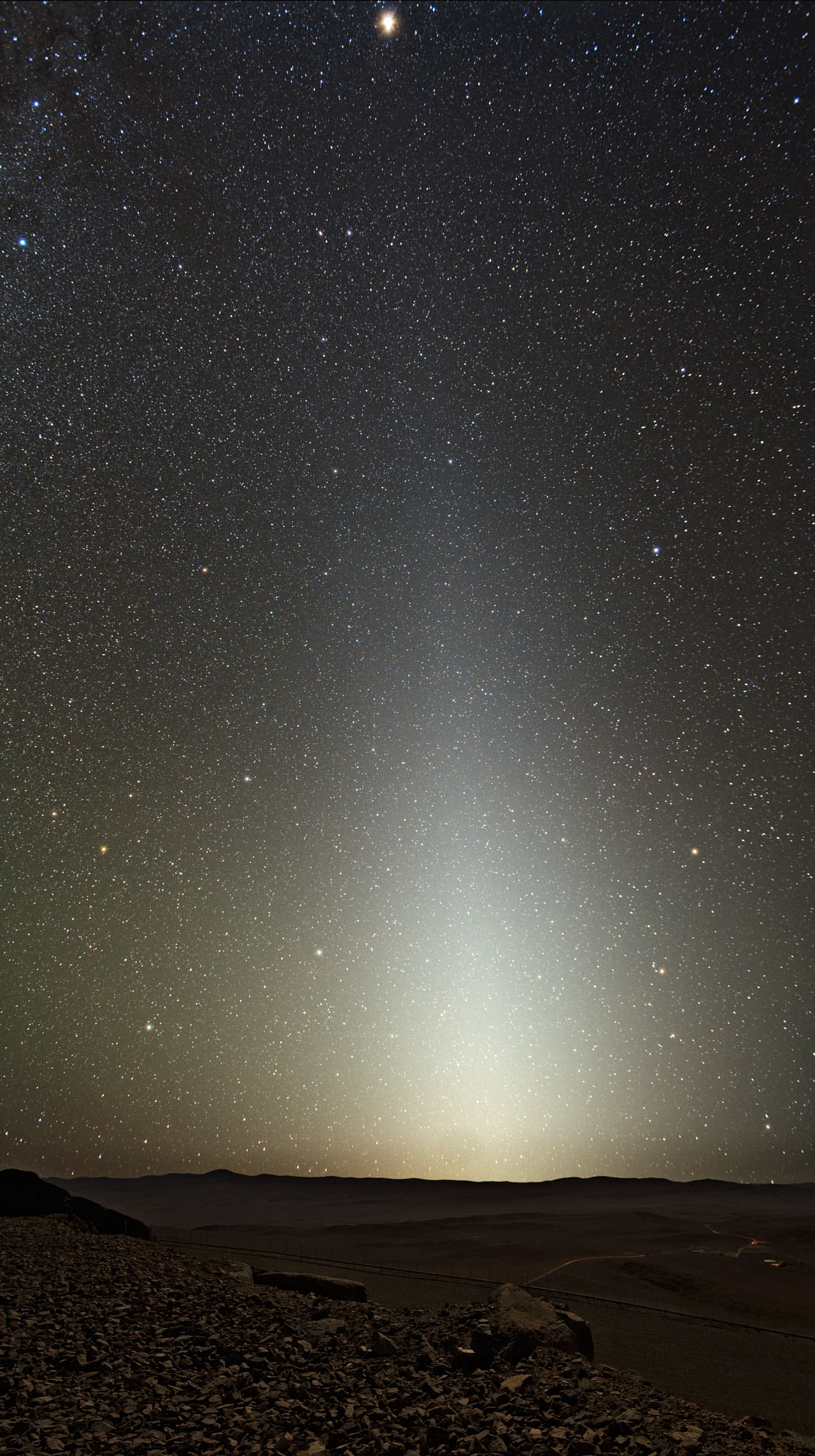[/caption]
Does Earth have a dust build-up problem?
Estimates vary of how much cosmic dust and meteorites enter Earth’s atmosphere each day, but range anywhere from 5 to 300 metric tons, with estimates made from satellite data and extrapolations of meteorite falls. Thing is, no one really knows for sure and so far there hasn’t been any real coordinated efforts to find out. But a new project proposal called Cosmic Dust in the Terrestrial Atmosphere (CODITA) would provide more accurate estimates of how much material hits Earth, as well as how it might affect the atmosphere.
“We have a conundrum – estimates of how much dust comes in vary by a factor of a hundred,” said John Plane from University of Leeds in the UK. “The aim of CODITA is to resolve this huge discrepancy.”
Even though we consider space to be empty, if all the material between the Sun and Jupiter were compressed together it would form a moon 25 km across.
So how much of this stuff – leftovers from the formation of the planets, debris from comets and asteroid collisions, etc. — encounters Earth? Satellite observations suggest that 100-300 metric tons of cosmic dust enter the atmosphere each day. This figure comes from the rate of accumulation in polar ice cores and deep-sea sediments of rare elements linked to cosmic dust, such as iridium and osmium.
But other measurements – which includes meteor radar observations, laser observations and measurements by high altitude aircraft — indicate that the input could be as low as 5 metric ton per day.
Knowing the difference could have a big influence on our understanding of things like climate change and, noctilucent clouds, as well as ozone and ocean chemistry.
“If the dust input is around 200 tons per day, then the particles are being transported down through the middle atmosphere considerably faster than generally believed,” said Plane. “If the 5-tonne figure is correct, we will need to revise substantially our understanding of how dust evolves in the Solar System and is transported from the middle atmosphere to the surface.”
When dust particles approach the Earth they enter the atmosphere at very high speeds, anything from 38,000 to 248,000 km/hour, depending on whether they are orbiting in the same direction or the opposite to the Earth’s motion around the Sun. The particles undergo very rapid heating through collisions with air molecules, reaching temperatures well in excess of 1,600 degrees Celsius. Particles with diameters greater than about 2 millimeters produce visible “shooting stars,” but most of the mass of dust particles entering the atmosphere is estimated to be much smaller than this, so can be detected only using specialized meteor radars.
The metals injected into the atmosphere from evaporating dust particles are involved in a diverse range of phenomena linked to climate change.
“Cosmic dust is associated with the formation of ‘noctilucent’ clouds – the highest clouds in the Earth’s atmosphere. The dust particles provide a surface for the cloud’s ice crystals to form. These clouds develop during summer in the polar regions and they appear to be an indicator of climate change,’ said Plane. “The metals from the dust also affect ozone chemistry in the stratosphere. The amount of dust present will be important for any geo-engineering initiatives to increase sulphate aerosol to offset global warming. Cosmic dust also fertilises the ocean with iron, which has potential climate feedbacks because marine phytoplankton emit climate-related gases.”
The CODITA team will also use laboratory facilities to tackle some of the least well-understood aspects of the problem
“In the lab, we’ll be looking at the nature of cosmic dust evaporation, as well as the formation of meteoric smoke particles, which play a role in ice nucleation and the freezing of polar stratospheric clouds,” said Plane. “The results will be incorporated into a chemistry-climate model of the whole atmosphere. This will make it possible, for the first time, to model the effects of cosmic dust consistently from the outer Solar System to the Earth’s surface.”
CODITA has received a EUR 2.5 million grant from the European Research Council to investigate the dust input over the next 5 years. The international team, led by Plane, is made up of over 20 scientists in the UK, the US and Germany. Plane presented information about the project at the National Astronomy meeting in the UK this week.

